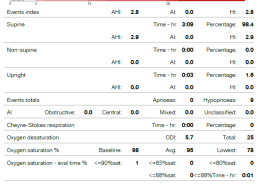I started using this hair spray 1 month ago cause of some hair loss issue. Is this the best product available as I’m not seeing a huge difference so far and how long do I need to use it for?
The timing of sleep, in addition to the total duration, plays a significant role in determining the quality and restorative nature of your sleep. Here are some key considerations regarding your sleep schedule: Circadian Rhythms - Biological Clock: Your body operates on a circadian rhythm, which is aRead more
The timing of sleep, in addition to the total duration, plays a significant role in determining the quality and restorative nature of your sleep. Here are some key considerations regarding your sleep schedule:
Circadian Rhythms
– Biological Clock: Your body operates on a circadian rhythm, which is a natural, internal process that regulates the sleep-wake cycle and repeats roughly every 24 hours. This rhythm is influenced by external cues like light and darkness.
– Optimal Sleep Window: Typically, the most restorative sleep occurs when your sleep schedule aligns with your natural circadian rhythm. For most people, this means sleeping during the night and being awake during the day.
Sleep Quality
– Impact of Late Sleep: Going to bed very late, such as 3 a.m., can disrupt your circadian rhythm, potentially leading to poorer sleep quality even if you get the recommended amount of sleep. This can result in less time spent in the deeper, more restorative stages of sleep.
– Daytime Functioning: Misalignment with your circadian rhythm can affect your alertness, cognitive function, and mood during the day, which is particularly important for a student who needs to focus and retain information.
Health Implications
– Long-term Health Risks: Consistently sleeping outside of typical nighttime hours can increase the risk of various health issues, including metabolic disorders, cardiovascular problems, and mental health concerns.
– Social and Academic Impact: A sleep schedule that is out of sync with societal norms can lead to “social jet lag,” where your body’s internal clock is misaligned with your social obligations, potentially affecting your academic performance and social interactions.
Recommendations
– Gradual Adjustment: If possible, try to gradually shift your sleep schedule to an earlier time. This can be done by adjusting your bedtime by 15-30 minutes earlier every few days.
– Consistent Schedule: Aim to maintain a consistent sleep schedule, even on weekends, to help regulate your body’s internal clock.
– Sleep Hygiene: Practice good sleep hygiene by creating a conducive sleep environment, avoiding caffeine and screens before bed, and establishing a relaxing pre-sleep routine.
Conclusion
While getting enough sleep is crucial, the timing of your sleep can significantly impact its quality and your overall health. Aligning your sleep schedule with your natural circadian rhythm can enhance your well-being and academic performance. If adjusting your schedule is challenging, consider consulting a healthcare professional for personalized advice.
See less


When addressing hair loss, it's important to consider the type of hair loss you're experiencing, as well as the specific product you're using. Here are some general considerations and recommendations based on current knowledge about hair loss treatments: Types of Hair Loss 1. Androgenetic Alopecia (Read more
When addressing hair loss, it’s important to consider the type of hair loss you’re experiencing, as well as the specific product you’re using. Here are some general considerations and recommendations based on current knowledge about hair loss treatments:
Types of Hair Loss
1. Androgenetic Alopecia (Male and Female Pattern Hair Loss):
– Treatment Options: Topical minoxidil is commonly used and can take 3 to 6 months to show noticeable results. For men, finasteride is another option, while women may benefit from anti-androgens like spironolactone or cyproterone acetate.
– Expectations: These treatments generally stabilize hair loss and may thicken existing hair, but they do not typically reverse hair loss entirely.
2. Frontal Fibrosing Alopecia (FFA):
– Treatment Options: This condition often requires a combination of topical and systemic treatments, such as high-potency corticosteroids, 5-alpha reductase inhibitors, or hydroxychloroquine.
– Expectations: The goal is to stabilize the condition rather than achieve regrowth, as FFA is a scarring alopecia.
3. Telogen Effluvium:
– Treatment Options: Often resolves on its own once the underlying cause is addressed. Stress management, nutritional support, and time are key.
– Expectations: Hair regrowth typically occurs within months after the trigger is resolved.
Product Considerations
– Hair Sprays and Topical Treatments: If the product you are using is a topical treatment like minoxidil, it generally requires consistent use for several months before significant changes are observed. If it’s a cosmetic product, it may not address the underlying cause of hair loss.
– Shampoos and Scalp Care: Therapeutic shampoos containing antifungal agents like ketoconazole can help if dandruff or scalp inflammation is contributing to hair loss.
Recommendations
1. Duration of Use: Continue using the product for at least 3 to 6 months to evaluate its effectiveness, unless you experience adverse effects.
2. Consultation: Consider consulting with a dermatologist or trichologist to accurately diagnose the type of hair loss and tailor the treatment accordingly.
3. Complementary Treatments: Ensure you are addressing any nutritional deficiencies or other health issues that might contribute to hair loss, such as iron deficiency or hormonal imbalances.
Monitoring and Follow-Up
– Photographic Monitoring: Take photographs to objectively assess changes over time.
– Regular Follow-Up: Schedule follow-ups to reassess the treatment plan and make necessary adjustments.
Ultimately, the best product or treatment plan will depend on the specific diagnosis and individual response to treatment. If you do not see improvement after a reasonable period, or if the condition worsens, a healthcare professional should be consulted for further evaluation and management.
See less